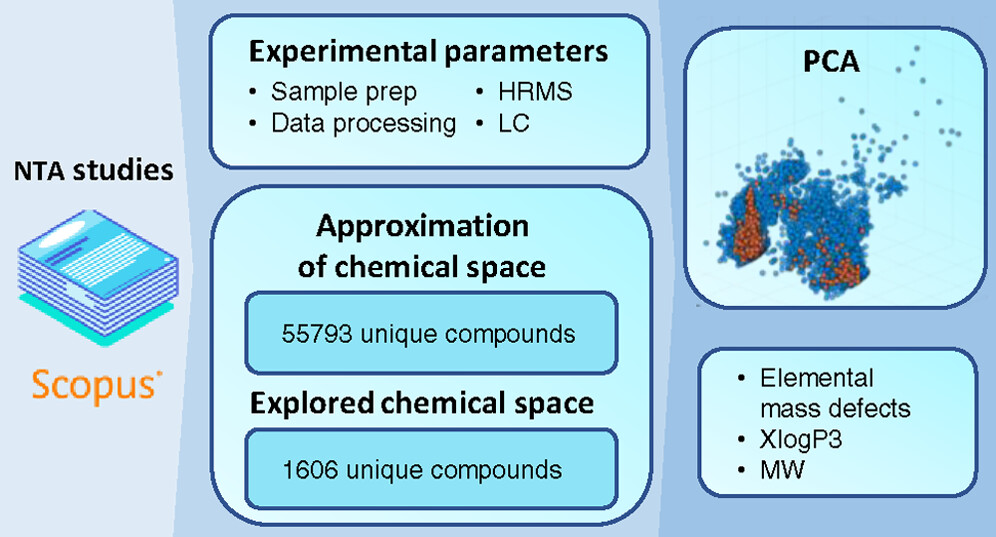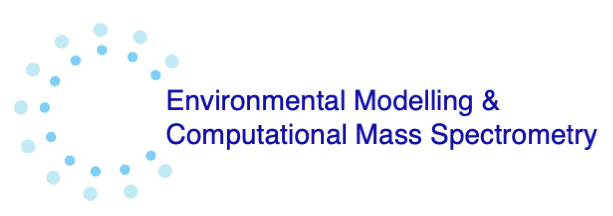New article - Assessment of the chemical space of NTA studies
Critical Assessment of the Chemical Space Covered by LC–HRMS Non-Targeted Analysis
Non-targeted analysis (NTA) has emerged as a valuable approach for the comprehensive monitoring of chemicals of emerging concern (CECs) in the exposome. The NTA approach can theoretically identify compounds with diverse physicochemical properties and sources. Even though they are generic and have a wide scope, non-targeted analysis methods have been shown to have limitations in terms of their coverage of the chemical space, as the number of identified chemicals in each sample is very low (e.g., ≤5%). Investigating the chemical space that is covered by each NTA assay is crucial for understanding the limitations and challenges associated with the workflow, from the experimental methods to the data acquisition and data processing techniques. In this review, we examined recent NTA studies published between 2017 and 2023 that employed liquid chromatography–high-resolution mass spectrometry. The parameters used in each study were documented, and the reported chemicals at confidence levels 1 and 2 were retrieved. The chosen experimental setups and the quality of the reporting were critically evaluated and discussed. Our findings reveal that only around 2% of the estimated chemical space was covered by the NTA studies investigated for this review. Little to no trend was found between the experimental setup and the observed coverage due to the generic and wide scope of the NTA studies. The limited coverage of the chemical space by the reviewed NTA studies highlights the necessity for a more comprehensive approach in the experimental and data processing setups in order to enable the exploration of a broader range of chemical space, with the ultimate goal of protecting human and environmental health. Recommendations for further exploring a wider range of the chemical space are given. Full text can be found here.

This paper was picked up by several news organizations globally (Lab Manager and PhysOrg).
